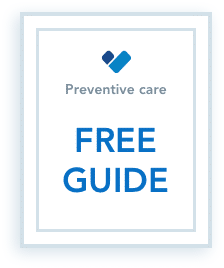20 health insurance terms to know before you enroll
For most people, navigating the world of health insurance can be confusing. Especially because there’s all sorts of lingo and jargon we don’t normally encounter in our daily lives. That’s why HealthSherpa put together a quick and easy alphabetized guide of some of the most commonly used health insurance terms. You can probably plan on coming across most, if not all of these when comparing healthcare costs and purchasing a health insurance plan either through your employer or on the Health Insurance Marketplace. And understanding what they mean can make the enrollment process and utilizing your coverage that much simpler.
Before you get started, we also created a FREE reference guide that highlights each of these terms. Grab it here and save to your computer for future reference.
Let’s dive in!
1. Affordable Care Act
Often referred to as the ACA, PPACA, or Obamacare, the Affordable Care Act is the comprehensive healthcare reform signed into law in March 2010. One of the primary goals of the ACA is to make health insurance more affordable and accessible, while providing consumers with tax credits that can overall lower their medical costs, depending on their household size and income.
2. Coinsurance
Coinsurance is the amount your insurance will pay for a covered service after you have met your deductible. For example, let’s say your health insurance plan says that you’ll pay $100 per office visit with a 20% coinsurance rate. Once your deductible is met, you will pay $20, or 20% of that $100 office visit rate. If you don’t meet your deductible, your out-of-pocket cost will be $100.
3. Copayment
A copayment is a fixed amount that you will pay for a covered healthcare service after you’ve paid your annual deductible. For example, a visit to your primary care doctor costs $150 out-of-pocket. With health insurance coverage, however, your plan might specify that you’ll only have to pay a copayment, or copay. This amount is usually significantly less. So, if your health insurance plan guarantees a $40 copay for primary care doctor office visits, you would just pay $40, and not the full $150 amount, after meeting your deductible.
Thanks to the Affordable Care Act, a number of preventive care services are available to all people with ACA-compliant coverage with no copayments. These services range from blood pressure and cholesterol screenings, various cancer screenings, contraception counseling and prescribing, and your annual well-person check-up.
4. Deductible
A deductible is the amount someone pays towards covered services before their health insurance plan kicks in. For example, if you have a $2,000 in-network deductible, you will pay the first $2,000 worth of covered services (by in-network providers) out-of-pocket during the year. Afterwards, your health insurance company will cover the rest according to the terms of your specific plan.
Deductibles can vary, with some health insurers offering low deductible plans, while others offer high deductible health plans (HDHP). Each person has different healthcare needs, so it’s necessary to compare insurance policies and deductibles side-by-side before choosing a plan.
5. Dependent
A dependent is someone, usually a spouse or a child, that a person can claim as a “personal exemption tax deduction.” Basically, anyone you claim on your tax return. Under the Affordable Care Act, you may qualify for a premium tax credit to help cover your dependents.
Typically, a dependent can be covered under the same health insurance plan. Although this may raise your individual annual deductible.
6. Drug formulary
A drug formulary, also called a drug list, are the prescription drugs that are covered by a specific insurance plan. If certain necessary prescription drugs are not included in a plan’s drug formulary, an individual may be able to purchase those drugs with an FSA (flexible spending account) or an HSA (health savings account).
If you enroll in coverage through HealthSherpa — and even if you don’t — you will have access to a FREE HealthSherpa account. Inside your account, you can find out how much your prescriptions cost, access information about your coverage, search for and choose a new doctor, report life changes to the Marketplace, download tax forms, plus more. Click here to sign up.
7. Effectuation Date
An effectuation date is the date when a Marketplace health insurance plan becomes active. This usually begins once the first payment towards your health plan is made.
8. Essential health benefits
Every health insurance plan offered through the Marketplace offers coverage of certain essential health benefits and medical care. These benefits include, but are not necessarily limited to:
- Ambulatory services.
- Pregnancy and childbirth.
- Pediatric services.
- Preventive services, including many types of doctor’s visits and visits to a primary care physician.
- Prescription drugs.
- Hospitalization, including overnight stays if necessary.
- Mental health and substance use disorder services.
- Emergency services, including urgent care.
- Rehabilitative services.
- Lab services.
9. In-network
If a doctor, hospital, or other healthcare provider is “in-network,” it means they have contracted with your health insurance company to accept your insurance plan. As a result of this contract, the provider and the insurance company have also agreed on the costs associated with healthcare services. This includes what the insured person will be spending (that’s you) and what your insurance plan will be contributing towards those costs.
10. Marketplace
The “Health Insurance Marketplace” (sometimes referred to as the “exchange”) is the one-stop shop and enrollment service created by the ACA. It’s where a person can compare different health insurance companies and plans, as well as monthly premiums and deductibles, and purchase individual health insurance. For many states, the federal government runs the Marketplace via HealthCare.gov. Other states run their own Marketplace on different websites. Or you can enroll in a certified partner of HealthCare.gov like HealthSherpa.
11. Metal levels (bronze, silver, gold, platinum)
Metal levels represent different kinds of plans on the Marketplace. These names have nothing to do with quality of care received. They simply differentiate how costs will be split between someone and their health insurance plan.
According to HealthCare.gov, the general breakdown follows these guidelines but may slightly differ state-by-state:
| Plan Category | Paid by Insurance | Paid by You |
| Bronze | 60% | 40% |
| Silver | 70% | 30% |
| Gold | 80% | 20% |
| Platinum | 90% | 10% |
12. Network types (HMO, PPO, etc.)
The most common health insurance plans available on the Marketplace are HMO, PPO, EPO, and POS.
- Health Maintenance Organization (HMO): The most common type of plan, with access to providers, hospitals, and specialists within its network. HMOs usually do not cover out-of-network care and focus primarily on preventive care. Someone with an HMO must have a primary care physician.
- Preferred Provider Organization (PPO): A plan that offers more flexibility when choosing a healthcare provider, specialist, or hospital.
- Point of Service (POS): A plan that costs less, as long as the patient uses services and health care professionals in network.
- Exclusive Provider Organization (EPO): Only in-network services and providers accept this plan (except in emergency situations).
Learn more about which plan is right for you here.
13. Open Enrollment Period
This is the annual period when you can shop for, compare, and enroll in a health insurance plan. In 2019, the Open Enrollment Period runs between November 1st and January 15th, in most states.
14. Out-of-network
Out-of-network doctors, hospitals, and other providers do not accept the costs approved by a person’s health insurance company. Individuals are responsible for paying the difference between their plan’s approved amount and what the out-of-network provider charges. However, there is an allowed amount, based on a geographic area’s UCR (usual, customary, and reasonable) amount, and most healthcare providers, whether they are in-network or not, do not charge above this amount.
15. Out-of-pocket maximum
An out-of-pocket maximum is the maximum amount you will have to pay for a covered service within a year. Once the required amount has been spent on deductibles, copayments, and coinsurance, a health insurance plan will cover the remainder of covered benefits.
This does not include premiums or services that are not covered by a person’s plan, however. More information about particular insurance coverage is available in the benefits summary on the health insurance website.
16. Premium
A premium is the monthly payment for your health insurance plan. Premiums do not cover the full cost of healthcare, though. They just guarantee that you remain covered by your health insurance and are guaranteed the kinds of copayments, coinsurance, deductibles and other rates of coverage outlined in your plan.
An important note: plans with higher premiums have lower deductibles, and sometimes can help a person cut costs in the long run.
17. Pre-existing conditions
A pre-existing medical condition is a health issue that was present before your health coverage began. Common examples include asthma and diabetes. Marketplace insurance plans and most group health plans cannot deny treatment or charge a higher premium based on a pre-existing condition.
18. Preventive services
Preventive services are routine healthcare services such as annual check-ups and women’s wellness exams — and they are covered with a $0 copay by every Marketplace plan. The goal of preventive care — and no cost preventive care especially — is both to ensure that someone doesn’t opt out-of preventive care as a result of not wanting to incur any additional costs. And also to prevent illness and other health problems that could be more serious and expensive over time.
19. Special Enrollment Period
If a person misses the Open Enrollment Period or has a qualifying life event (QLE), they may still be able to sign up for health insurance during a Special Enrollment Period (SEP). Some of the most common qualifying life events that might trigger an SEP are:
- Losing health coverage because of job loss or decrease in hours.
- Getting married.
- Moving.
- Having or adopting a child.
- Making too much income to qualify for Medicaid or Medicare.
- Turning 26 and aging off your parents’ health insurance plan.
Typically, a person has 60 days to enroll following their QLE. Click here to find out if you’re eligible.
20. Subsidy
Depending on your income level, if you buy your insurance through the Marketplace, whether on HealthCare.gov or HealthSherpa, you might be eligible for what’s known as an Advance Premium Tax Credit and/or Cost Saving Reduction. Advanced Premium Tax Credits are tax credit that apply in real time to lower your health insurance premiums each month. All subsidized coverage depends on your household size and income. Learn more about income guidelines and reduced cost coverage here. Depending on your income level, selecting a Silver-level Marketplace plan will also qualify you for extra savings through Cost Sharing Reductions, which lower the amounts of your copayments, deductibles, and coinsurance, as well as lowering your out-of-pocket maximums.
—
We hope you found this article helpful and that it gives you more confidence when applying for a new health insurance plan. And before you go, don’t forget to grab our FREE reference guide!














Leave a Comment